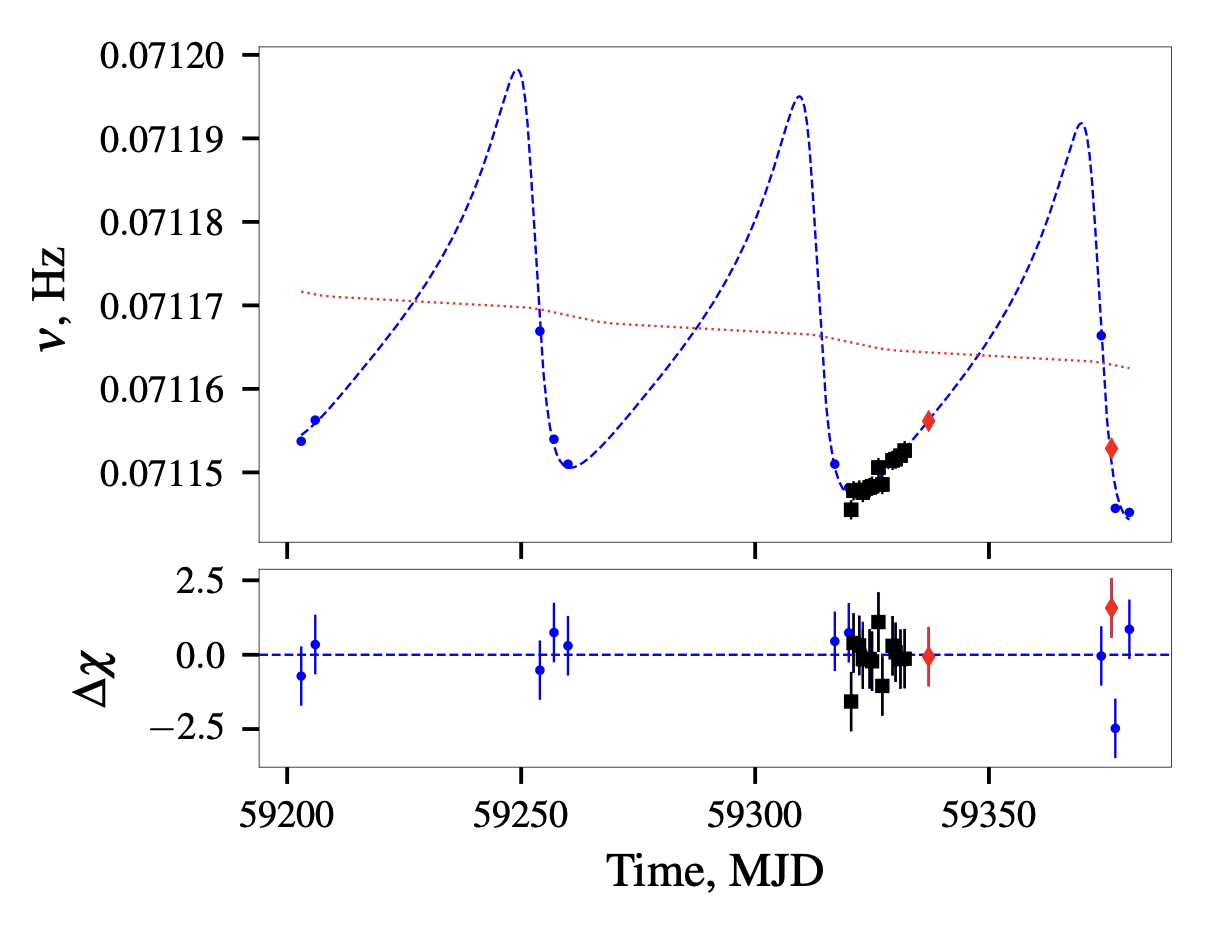NICER / ISS Science Nugget
for September 2, 2021
NICER & Friends Uncover a Pulsar Orbit
As reported here on 29 April, NICER discovered X-ray pulsations with a 14-second period from the transient source MAXI J0903-591, which itself had just been discovered in outburst by JAXA's MAXI payload. The pulsations strongly suggested that MAXI J0903 is a binary system consisting of a neutron star accreting matter from a massive companion star. At the time, a retrospective analysis of data from the Gamma-ray Burst Monitor (GBM) on NASA's Fermi mission suggested outbursts of MAXI J0903 were recurring at approximately 60-day intervals; however, ground-based observations of the companion star found additional periodicities in visible-light brightness, at 0.79 and 3.8 days. It was thus unclear what the system's orbital period might be.
Follow-up NICER observations timed to coincide with subsequent outbursts 60 and 120 days after the initial discovery have enabled confirmation, through Doppler shifts in pulse timing, that the orbital period is in fact 60 days. Independently, a Russian-German team combined NICER and GBM data with new observations from NASA's NuSTAR telescope to refine the orbital solution and to distinguish it from the neutron star's long-term rotational slow-down (see Figure). This work by Tsygankov and collaborators was recently accepted for publication in the journal Astronomy & Astrophysics.
The 0.79 and 3.8 day periodicities are now understood to be related to the spin of the Type "Be" companion star, which likely hosts an equatorial "excretion" disk of matter. In addition to pinning down the orbital period at 60.3 days, the new analyses show that the stars move in highly elliptical orbits, and the recurrent outbursts can be explained by an increase in the accretion rate onto the neutron star every time it makes its closest approach to the companion star and its outflows.

Figure: Spin evolution of the neutron star in MAXI J0903 (upper panel), as measured by Fermi/GBM (blue points), NICER (black squares) and NuSTAR (red diamonds). Components of a best-fit model to the total long-term spin variations are the intrinsic slow-down (red dotted curve) and the repeating orbital Doppler modulation with 60-day period (blue dashed curve). The lower panel shows the model residuals. (Figure credit: Tsygankov et al.)
<< Previous
Main Index
Next >>